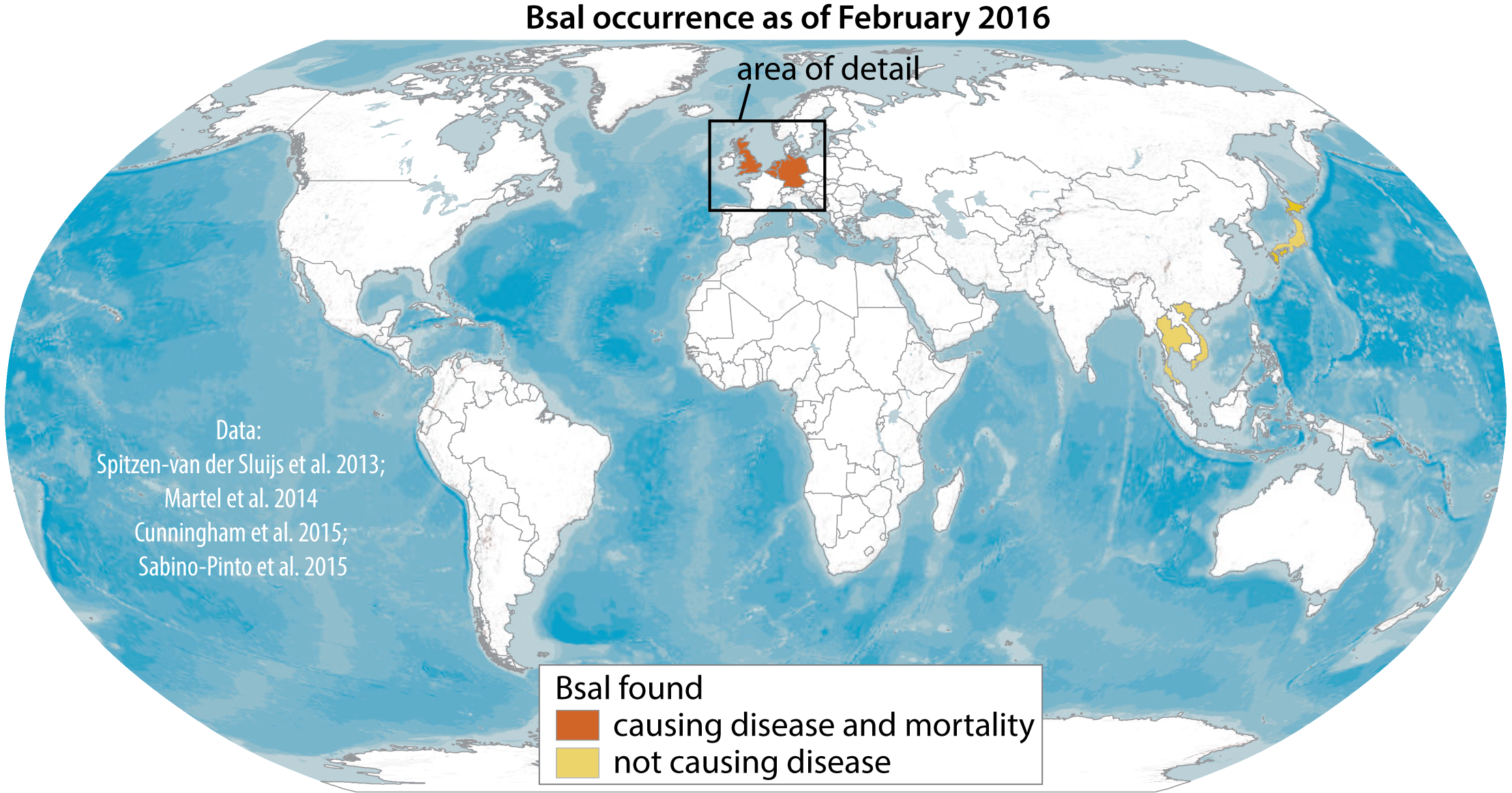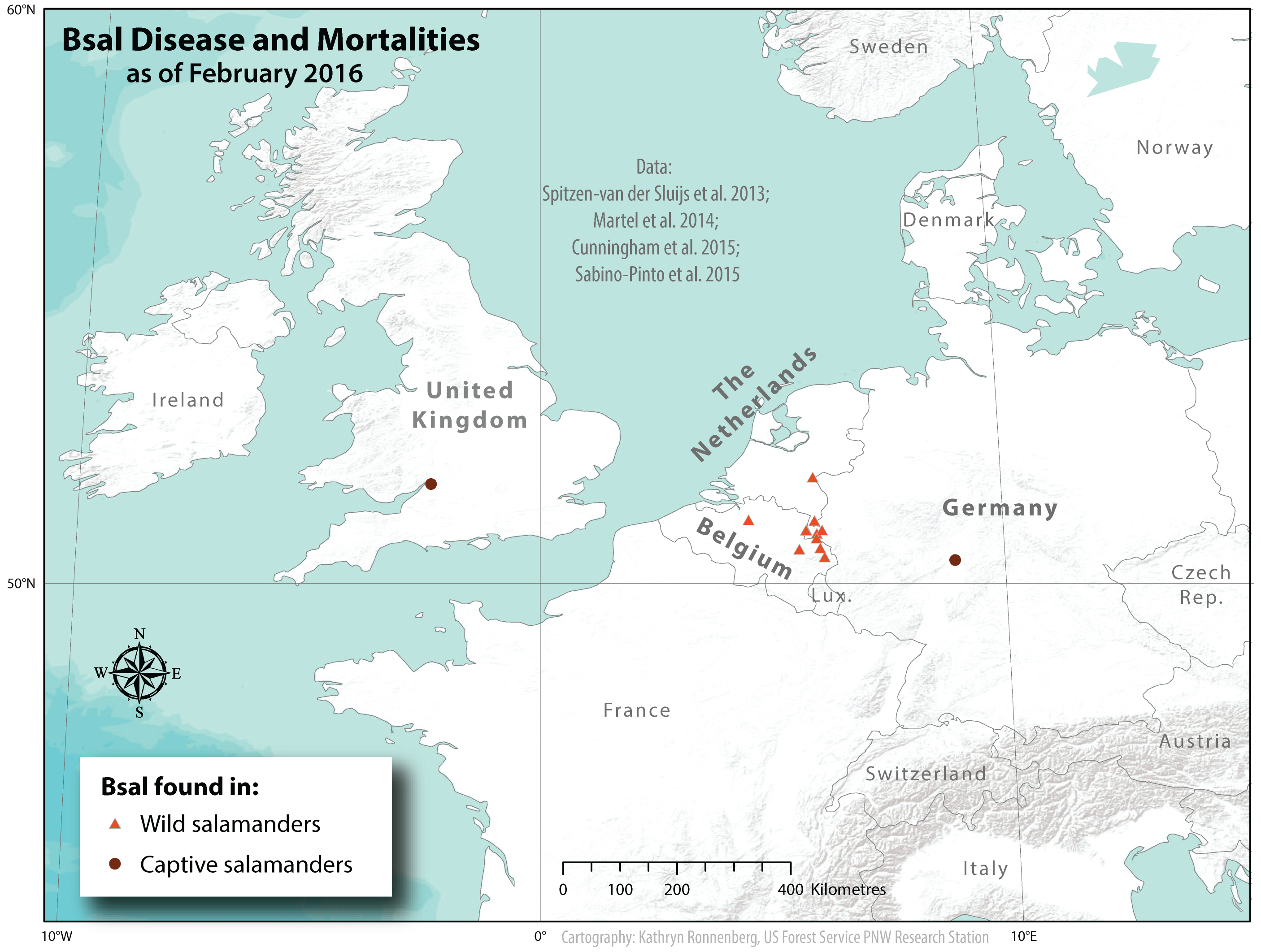What’s new in February 2016?
New research article:
Spatial variation in risk and consequence of Batrachochytrium salamandrivorans introduction in the USA.
Katherine L. D. Richgels, Robin E. Russell, Michael J. Adams, C. LeAnn White, Evan H. Campbell Grant
R. Soc. open sci. 2016 3 150616; DOI: 10.1098/rsos.150616. Published 17 February 2016
The areas of the United States that are most at risk of a potentially invasive salamander fungus are the Pacific coast, the southern Appalachian Mountains and the mid-Atlantic regions, according to a recently published U.S. Geological Survey report.
These findings can help managers protect already declining amphibians in the U.S. from the Batrachochytrium salamandrivorans, or Bsal, fungus. Bsal is decimating wild salamander populations in Europe and could emerge in the U.S. through the captive amphibian trade. The new USGS study identifies areas of the U.S. with high likelihoods of two risks: Bsal introduction and severe consequences for local salamanders. READ MORE

Contact person for European data: An Martel ([email protected])

Contact person for European data: An Martel ([email protected])
